Evaluation of Antibacterial and Antiviral Compounds from Commiphora myrrha (T.Nees) Engl. Resin and Their Promising Application with Biochar
Abstract
:1. Introduction
2. Materials and Methods
2.1. Materials
2.2. Preparation of C. myrrha (T.Nees) Engl. Resin Extracts
2.3. Isolation and Identification of Airborne Bacterial Strains
2.4. Antibacterial Activity Evaluation of C. myrrha (T.Nees) Engl. Resin Extracts
2.5. Evaluation of Cytotoxicity and Anti-Inflammatory Properties of C. myrrha (T.Nees) Engl. Resin Extracts
2.6. Antiviral Activity of C. myrrha (T.Nees) Engl. Resin Extracts and C. myrrha (T.Nees) Engl. Resin Extract-Coated Biochar
2.7. Adsorption of C. myrrha (T.Nees) Engl. Resin Extracts onto Biochar
2.8. Natural Compound Analysis of C. myrrha (T.Nees) Engl. Resin Extracts
2.9. Statistical Analysis
3. Results and Discussion
3.1. Identification of Test Microorganisms
3.2. Screening of Optimal Solvent for Antibacterial Activity of C. myrrha (T.Nees) Engl. Resin Extracts on Airborne Bacterium
3.3. Evaluation of Antibacterial Activity of C. myrrha (T.Nees) Engl. Resin Extracts
3.4. Evaluation of Cytotoxicity and Anti-Inflammatory Properties of C. myrrha (T.Nees) Engl. Resin Extracts
3.5. Evaluation of Antiviral Activity of C. myrrha (T.Nees) Engl. Resin Extracts
3.6. Potential Mechanisms for Antibacterial and Antiviral Activity of C. myrrha (T.Nees) Engl. Resin Extracts
4. Conclusions and Future Research
Supplementary Materials
Author Contributions
Funding
Institutional Review Board Statement
Informed Consent Statement
Data Availability Statement
Conflicts of Interest
References
- Kaczmarek, B. Tannic acid with antiviral and antibacterial activity as a promising component of biomaterials—A minireview. Materials 2020, 13, 3224. [Google Scholar] [CrossRef] [PubMed]
- Von Nussbaum, F.; Brands, M.; Hinzen, B.; Weigand, S.; Häbich, D. Antibacterial natural products in medicinal chemistry—Exodus or revival? Angew. Chem.—Int. Ed. 2006, 45, 5072–5129. [Google Scholar] [CrossRef] [PubMed]
- Burlacu, E.; Nisca, A.; Tanase, C. A comprehensive review of phytochemistry and biological activities of Quercus species. Forests 2020, 11, 904. [Google Scholar] [CrossRef]
- Efenberger-Szmechtyk, M.; Nowak, A.; Czyzowska, A. Plant extracts rich in polyphenols: Antibacterial agents and natural preservatives for meat and meat products. Crit. Rev. Food Sci. Nutr. 2021, 61, 149–178. [Google Scholar] [CrossRef] [PubMed]
- Kim, T.; Song, B.; Cho, K.S.; Lee, I.S. Therapeutic potential of volatile terpenes and terpenoids from forests for inflammatory diseases. Int. J. Mol. Sci. 2020, 21, 2187. [Google Scholar] [CrossRef]
- Nasır, A.; Yabalak, E. Investigation of antioxidant, antibacterial, antiviral, chemical composition, and traditional medicinal properties of the extracts and essential oils of the Pimpinella species from a broad perspective: A review. J. Essent. Oil Res. 2021, 33, 411–426. [Google Scholar] [CrossRef]
- Sasidharan, S.; Chen, Y.; Saravanan, D.; Sundram, K.M.; Latha, L.Y. Extraction, Isolation and Characterization Of Bioactive Compounds From Plants’ Extracts. Afr. J. Tradit. Complement. Altern. Med. 2011, 8, 1–10. [Google Scholar] [CrossRef]
- Aleksic Sabo, V.; Knezevic, P. Antimicrobial activity of Eucalyptus camaldulensis Dehn. plant extracts and essential oils: A Review. Ind. Crops Prod. 2019, 132, 413–429. [Google Scholar] [CrossRef]
- Ahmadi, A.; Shahidi, S.A.; Safari, R.; Motamedzadegan, A.; Ghorbani-HasanSaraei, A. Evaluation of stability and antibacterial properties of extracted chlorophyll from alfalfa (Medicago sativa L.). Food Chem. Toxicol. 2022, 163, 112980. [Google Scholar] [CrossRef]
- Alboofetileh, M.; Rezaei, M.; Tabarsa, M.; Rittà, M.; Donalisio, M.; Mariatti, F.; You, S.G.; Lembo, D.; Cravotto, G. Effect of different non-conventional extraction methods on the antibacterial and antiviral activity of fucoidans extracted from Nizamuddinia zanardinii. Int. J. Biol. Macromol. 2019, 124, 131–137. [Google Scholar] [CrossRef]
- Mukherjee, C.; Suryawanshi, P.G.; Kalita, M.C.; Deka, D.; Aranda, D.A.G.; Goud, V.V. Polarity-wise successive solvent extraction of Scenedesmus obliquus biomass and characterization of the crude extracts for broad-spectrum antibacterial activity. Biomass Convers. Biorefin. 2022, 1–17. [Google Scholar] [CrossRef]
- Thawabteh, A.M.; Swaileh, Z.; Ammar, M.; Jaghama, W.; Yousef, M.; Karaman, R.A.; Bufo, S.; Scrano, L. Antifungal and antibacterial activities of isolated marine compounds. Toxins 2023, 15, 93. [Google Scholar] [CrossRef] [PubMed]
- Zhang, H.; Wang, X.; He, D.; Zou, D.; Zhao, R.; Wang, H.; Li, S.; Xu, Y.; Abudureheman, B. Optimization of flavonoid extraction from Xanthoceras sorbifolia bunge flowers, and the antioxidant and antibacterial capacity of the extract. Molecules 2022, 27, 113. [Google Scholar] [CrossRef] [PubMed]
- Abubakar, A.R.; Haque, M. Preparation of medicinal plants: Basic extraction and fractionation procedures for experimental purposes. J. Pharm. Bioallied Sci. 2020, 12, 1–10. [Google Scholar] [CrossRef]
- Hardouin, K.; Bedoux, G.; Burlot, A.S.; Donnay-Moreno, C.; Bergé, J.P.; Nyvall-Collén, P.; Bourgougnon, N. Enzyme-assisted extraction (EAE) for the production of antiviral and antioxidant extracts from the green seaweed Ulva armoricana (Ulvales, Ulvophyceae). Algal Res. 2016, 16, 233–239. [Google Scholar] [CrossRef]
- Madia, V.N.; De Angelis, M.; De Vita, D.; Messore, A.; De Leo, A.; Ialongo, D.; Tudino, V.; Saccoliti, F.; De Chiara, G.; Garzoli, S.; et al. Investigation of Commiphora myrrha (Nees) Engl. oil and its main components for antiviral activity. Pharmaceuticals 2021, 14, 243. [Google Scholar] [CrossRef]
- Alara, O.R.; Abdurahman, N.H.; Ukaegbu, C.I. Extraction of phenolic compounds: A review. Curr. Res. Food Sci. 2021, 4, 200–214. [Google Scholar] [CrossRef] [PubMed]
- Borges, A.; José, H.; Homem, V.; Simões, M. Comparison of techniques and solvents on the antimicrobial and antioxidant potential of extracts from acacia dealbata and olea europaea. Antibiotics 2020, 9, 48. [Google Scholar] [CrossRef]
- Asghar, N.; Naqvi, S.A.R.; Hussain, Z.; Rasool, N.; Khan, Z.A.; Shahzad, S.A.; Sherazi, T.A.; Janjua, M.R.S.A.; Nagra, S.A.; Zia-Ul-Haq, M.; et al. Compositional difference in antioxidant and antibacterial activity of all parts of the Carica papaya using different solvents. Chem. Cent. J. 2016, 10, 5. [Google Scholar] [CrossRef]
- Haminiuk, C.W.I.; Plata-Oviedo, M.S.V.; de Mattos, G.; Carpes, S.T.; Branco, I.G. Extraction and quantification of phenolic acids and flavonols from Eugenia pyriformis using different solvents. J. Food Sci. Technol. 2014, 51, 2862–2866. [Google Scholar] [CrossRef]
- Lim, S.; Choi, A.H.; Kwon, M.; Joung, E.J.; Shin, T.; Lee, S.G.; Kim, N.G.; Kim, H.R. Evaluation of antioxidant activities of various solvent extract from Sargassum serratifolium and its major antioxidant components. Food Chem. 2019, 278, 178–184. [Google Scholar] [CrossRef]
- Nguyen, L.T.T.; Nguyen, T.T.; Nguyen, H.N.; Bui, Q.T.P. Simultaneous determination of active compounds in Piper betle Linn. leaf extract and effect of extracting solvents on bioactivity. Eng. Rep. 2020, 2, e12246. [Google Scholar] [CrossRef]
- Rahmani, A.H.; Anwar, S.; Raut, R.; Almatroudi, A.; Babiker, A.Y.; Khan, A.A.; Alsahli, M.A.; Almatroodi, S.A. Therapeutic potential of myrrh, a natural resin, in health management through modulation of oxidative stress, inflammation, and advanced glycation end products formation using in Vitro and in Silico analysis. Appl. Sci. 2022, 12, 9175. [Google Scholar] [CrossRef]
- Rezaei, M.; Ghasemi Pirbalouti, A. Phytochemical, antioxidant and antibacterial properties of extracts from two spice herbs under different extraction solvents. J. Food Meas. Charact. 2019, 13, 2470–2480. [Google Scholar] [CrossRef]
- Termentzi, A.; Fokialakis, N.; Leandros Skaltsounis, A. Natural resins and bioactive natural products thereof as potential anitimicrobial agents. Curr. Pharm. Des. 2012, 17, 1267–1290. [Google Scholar] [CrossRef]
- Adam, M.E.; Selim, S.A. Antimicrobial activity of essential oil and methanol extract from Commiphora molmol (Engl.) resin. Int. J. Curr. Microbiol. 2013, 2, 1–6. [Google Scholar]
- Bhattacharjee, M.K.; Alenezi, T. Antibiotic in myrrh from Commiphora molmol preferentially kills nongrowing bacteria. Future Sci. 2020, 6, FSO458. [Google Scholar] [CrossRef]
- Hana, D.B.; Kadhim, H.M.; Jasim, G.A.; Latif, Q.N. Antibacterial activity of Commiphora molmol extracts on some bacterial species in Iraq. Sch. Acad. J. Pharm. 2016, 5, 406–412. [Google Scholar] [CrossRef]
- Mahboubi, M.; Kazempour, N. The antimicrobial and antioxidant activities of Commiphora molmol extracts. Biharean Biol. 2016, 10, e151410. [Google Scholar]
- Mohamed, A.; Shahid, S.M.A.; Alkhamaiseh, S.I.; Ahmed, M.Q.; Albalwi, F.O.; Al-Gholaigah, H.; Alqhtani, M.; Alshammari, G. Antibacterial activity of Commiphora molmol in wound infections. J. Diagn. Pathol. Oncol. 2017, 2, 32–36. [Google Scholar]
- Das, R.; Panda, S.N. Preparation and applications of biochar based nanocomposite: A review. J. Anal. Appl. Pyrolysis 2022, 167, 105691. [Google Scholar] [CrossRef]
- Nguyen, D.T.C.; Tran, T.V.; Nguyen, T.T.T.; Nguyen, D.H.; Alhassan, M.; Lee, T. New frontiers of invasive plants for biosynthesis of nanoparticles towards biomedical applications: A review. Sci. Total Environ. 2023, 857, 159278. [Google Scholar] [CrossRef]
- Pirtarighat, S.; Ghannadnia, M.; Baghshahi, S. Green synthesis of silver nanoparticles using the plant extract of Salvia spinosa grown in vitro and their antibacterial activity assessment. J. Nanostructure Chem. 2019, 9, 1–9. [Google Scholar] [CrossRef]
- Strasakova, M.; Pummerova, M.; Filatova, K.; Sedlarik, V.; Fernández-García, M. Immobilization of caraway essential oil in a polypropylene matrix for antimicrobial modification of a polymeric surface. Polymers 2021, 13, 906. [Google Scholar] [CrossRef]
- Choi, Y.K.; Choi, T.R.; Gurav, R.; Bhatia, S.K.; Park, Y.L.; Kim, H.J.; Kan, E.; Yang, Y.H. Adsorption behavior of tetracycline onto Spirulina sp. (microalgae)-derived biochars produced at different temperatures. Sci. Total Environ. 2020, 710, 136282. [Google Scholar] [CrossRef]
- Kim, J.E.; Bhatia, S.K.; Song, H.J.; Yoo, E.; Jeon, H.J.; Yoon, J.Y.; Yang, Y.; Gurav, R.; Yang, Y.H.; Kim, H.J.; et al. Adsorptive removal of tetracycline from aqueous solution by maple leaf-derived biochar. Bioresour. Technol. 2020, 306, 123092. [Google Scholar] [CrossRef]
- Adhikari, S.; Timms, W.; Mahmud, M.A.P. Optimising water holding capacity and hydrophobicity of biochar for soil amendment—A review. Sci. Total Environ. 2022, 851, 158043. [Google Scholar] [CrossRef]
- Choi, Y.K.; Kan, E. Effects of pyrolysis temperature on the physicochemical properties of alfalfa-derived biochar for the adsorption of bisphenol A and sulfamethoxazole in water. Chemosphere 2019, 218, 741–748. [Google Scholar] [CrossRef] [PubMed]
- Liu, M.; Ke, X.; Liu, X.; Fan, X.; Xu, Y.; Li, L.; Solaiman, Z.M.; Pan, G. The effects of biochar soil amendment on rice growth may vary greatly with rice genotypes. Sci. Total Environ. 2022, 810, 152223. [Google Scholar] [CrossRef] [PubMed]
- Liu, Z.; Zhu, M.; Wang, J.; Liu, X.; Guo, W.; Zheng, J.; Bian, R.; Wang, G.; Zhang, X.; Cheng, K.; et al. The responses of soil organic carbon mineralization and microbial communities to fresh and aged biochar soil amendments. Glob. Change Biol. Bioenergy 2019, 11, 1408–1420. [Google Scholar] [CrossRef]
- Song, H.J.; Gurav, R.; Bhatia, S.K.; Lee, E.; Bin, K.H.J.; Yang, Y.H.; Kan, E.; Kim, H.H.; Lee, S.H.; Choi, Y.K. Treatment of microcystin-LR cyanotoxin contaminated water using Kentucky bluegrass-derived biochar. J. Water Process Eng. 2021, 41, 102054. [Google Scholar] [CrossRef]
- Kang, Y.; Choi, Y.K.; Kim, H.J.; Song, Y.; Kim, H. Preparation of anti-bacterial cellulose fiber via electrospinning and crosslinking with β-cyclodextrin. Fash. Text. 2015, 2, 11. [Google Scholar] [CrossRef]
- Song, H.J.; Yang, S.W.; Jo, J.W.; Choi, Y.K.; Lee, I.S.; Lee, B.U.; Lee, S.H.; Kim, H.H.; Kim, K.J.; Kim, H.J. Submerged leaves of live indoor foliage plants adsorb H1N1 influenza virus from suspension. Plant Signal Behav. 2023, 18, 2163869. [Google Scholar] [CrossRef] [PubMed]
- Chuang, S.; Yang, H.; Wang, X.; Xue, C.; Jiang, J.; Hong, Q. Potential effects of Rhodococcus qingshengii strain djl-6 on the bioremediation of carbendazim-contaminated soil and the assembly of its microbiome. J. Hazard. Mater. 2021, 414, 125496. [Google Scholar] [CrossRef] [PubMed]
- Fang, Y.; Wu, L.; Chen, G.; Feng, G. Complete genome sequence of Pseudomonas azotoformans S4, a potential biocontrol bacterium. J. Biotechnol. 2016, 227, 25–26. [Google Scholar] [CrossRef]
- Langlois, B.E.; Harmon, R.J.; Akers, K. Identification of Staphylococcus species of bovine origin with the API staph-ident system. J. Clin. Microbiol. 1983, 18, 1212–1219. [Google Scholar] [CrossRef]
- Osman, S.; Satomi, M.; Venkateswaran, K. Paenibacillus pasadenensis sp. nov. and Paenibacillus barengoltzii sp. nov., isolated from a spacecraft assembly facility. Int. J. Syst. Evol. Microbiol. 2006, 56, 1509–1514. [Google Scholar] [CrossRef]
- White, O.; Eisen, J.A.; Heidelberg, J.F.; Hickey, E.K.; Peterson, J.D.; Dodson, R.J.; Haft, D.H.; Gwinn, M.L.; Nelson, W.C.; Richardson, D.L.; et al. Genome sequence of the radioresistant bacterium Deinococcus radiodurans R1. Science 1999, 286, 1571–1577. [Google Scholar] [CrossRef]
- Zhao, G.Z.; Li, J.; Qin, S.; Zhang, Y.Q.; Zhu, W.Y.; Jiang, C.L.; Xu, L.H.; Li, W.J. Micrococcus yunnanensis sp. nov. 5444, a novel actinobacterium isolated from surface-sterilized Polyspora axillaris roots. Int. J. Syst. Evol. Microbiol. 2009, 59, 2383–2387. [Google Scholar] [CrossRef]
- Kapoor, G.; Saigal, S.; Elongavan, A. Action and resistance mechanisms of antibiotics: A guide for clinicians basic anatomy of bacterial cell. J. Anaesthesiol. Clin. Pharmacol. 2017, 33, 300–305. [Google Scholar] [CrossRef]
- Al-Madi, E.M.; Almohaimede, A.A.; Al-Obaida, M.I.; Awaad, A.S. Comparison of the antibacterial efficacy of Commiphora molmol and sodium hypochlorite as root canal irrigants against Enterococcus faecalis and Fusobacterium nucleatum. Evid. Based Complement. Alternat. Med. 2019, 2019, 6916795. [Google Scholar] [CrossRef] [PubMed]
- Abdallah, E.; Khalid, A. A preliminary evaluation of the antibacterial effects of Commiphora molmol and Boswellia papyrifera oleo-gum resins vapor. Int. J. Chem. Biochem. Res. 2012, 1, 1–5. [Google Scholar]
- Abdallah, E.M.; Khalid, A.S.; Ibrahim, N. Antibacterial activity of oleo-gum resins of Commiphora molmol and Boswellia papyrifera against methicillin resistant Staphylococcus aureus (MRSA). Sci. Res. Essays 2009, 4, 351–356. [Google Scholar]
- Mandal, S.M.; Dias, R.O.; Franco, O.L. Phenolic compounds in antimicrobial therapy. J. Med. Food 2017, 20, 1031–1038. [Google Scholar] [CrossRef]
- Belhaoues, S.; Amri, S.; Bensouilah, M. Major phenolic compounds, antioxidant and antibacterial activities of Anthemis praecox Link aerial parts. S. Afr. J. Bot. 2020, 131, 200–205. [Google Scholar] [CrossRef]
- Pandey, A.; Negi, P.S. Phytochemical composition, in vitro antioxidant activity and antibacterial mechanisms of Neolamarckia cadamba fruits extracts. Nat. Prod. Res. 2018, 32, 1189–1192. [Google Scholar] [CrossRef] [PubMed]
- Suzilla, W.Y.; Izzati, A.; Isha, I.; Zalina, A.; Rajaletchumy, V.K. Formulation and evaluation of antimicrobial herbosomal gel from Quercus infectoria extract. IOP Conf. Ser. Mater. Sci. Eng. 2020, 736, 022030. [Google Scholar] [CrossRef]
- Vance, S.H.; Tucci, M.; Benghuzzi, H. Evaluation of the antimicrobial efficacy of green tea extract (EGCG) against Streptococcus pyogenes in vitro. Biomed. Sci. Instrum. 2011, 47, 177–182. [Google Scholar]
- Roberts, I.S. The biochemistry and genetics of capsular polysaccharide production in bacteria. Annu. Rev. Microbiol. 1996, 50, 285–315. [Google Scholar] [CrossRef]
- Cheng, Y.W.; Cheah, K.P.; Lin, C.W.; Li, J.S.; Yu, W.Y.; Chang, M.L.; Yeh, G.C.; Chen, S.H.; Choy, C.S.; Hu, C.M. Myrrh mediates haem oxygenase-1 expression to suppress the lipopolysaccharide-induced inflammatory response in RAW264.7 macrophages. J. Pharm. Pharmacol. 2011, 63, 1211–1218. [Google Scholar] [CrossRef]
- Wang, W.; Cao, J.; Yang, J.; Niu, X.; Liu, X.; Zhai, Y.; Qiang, C.; Niu, Y.; Li, Z.; Dong, N.; et al. Antimicrobial activity of tannic acid in Vitro and its protective effect on mice against Clostridioides difficile. Microbiol. Spectr. 2023, 11, e0261822. [Google Scholar] [CrossRef]
- Gullón, B.; Lú-Chau, T.A.; Moreira, M.T.; Lema, J.M.; Eibes, G. Rutin: A review on extraction, identification and purification methods, biological activities and approaches to enhance its bioavailability. Trends Food Sci. Technol. 2017, 67, 220–235. [Google Scholar] [CrossRef]
- Qi, W.; Qi, W.; Xiong, D.; Long, M. Quercetin: Its antioxidant mechanism, antibacterial properties and potential application in prevention and control of toxipathy. Molecules 2022, 27, 6545. [Google Scholar] [CrossRef]
- Dinku, W.; Isaksson, J.; Rylandsholm, F.G.; Bouř, P.; Brichtová, E.; Choi, S.U.; Lee, S.H.; Jung, Y.S.; No, Z.S.; Svendsen, J.S.M.; et al. Anti-proliferative activity of a novel tricyclic triterpenoid acid from Commiphora africana resin against four human cancer cell lines. Appl. Biol. Chem. 2020, 63, 16. [Google Scholar] [CrossRef]
- Al-Nami, S.Y.; Fouda, A.E.A.S. Corrosion inhibition effect and adsorption activities of methanolic myrrh extract for cu in 2 M HNO3. Int. J. Electrochem. Sci. 2020, 15, 1187–1205. [Google Scholar] [CrossRef]
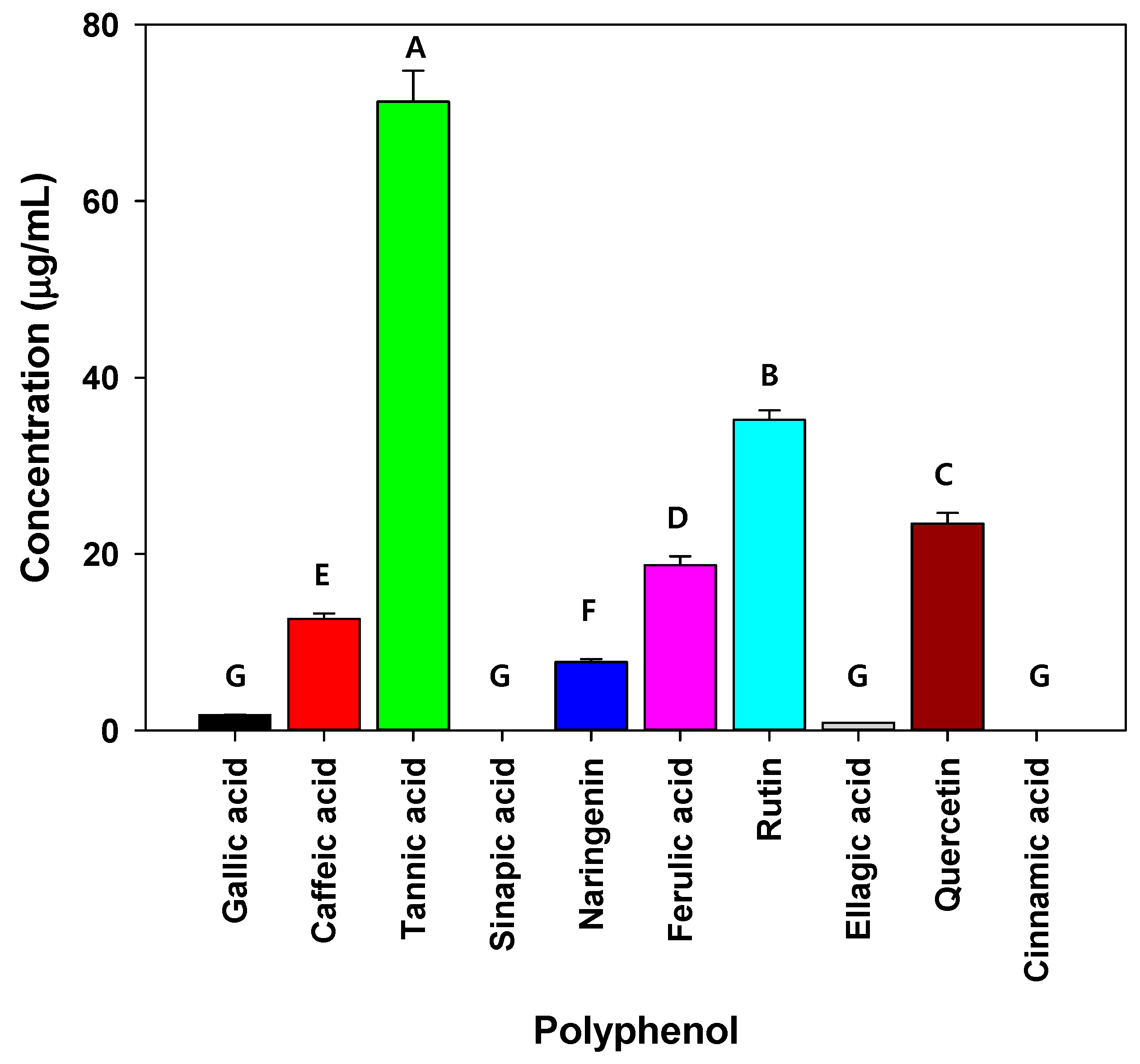
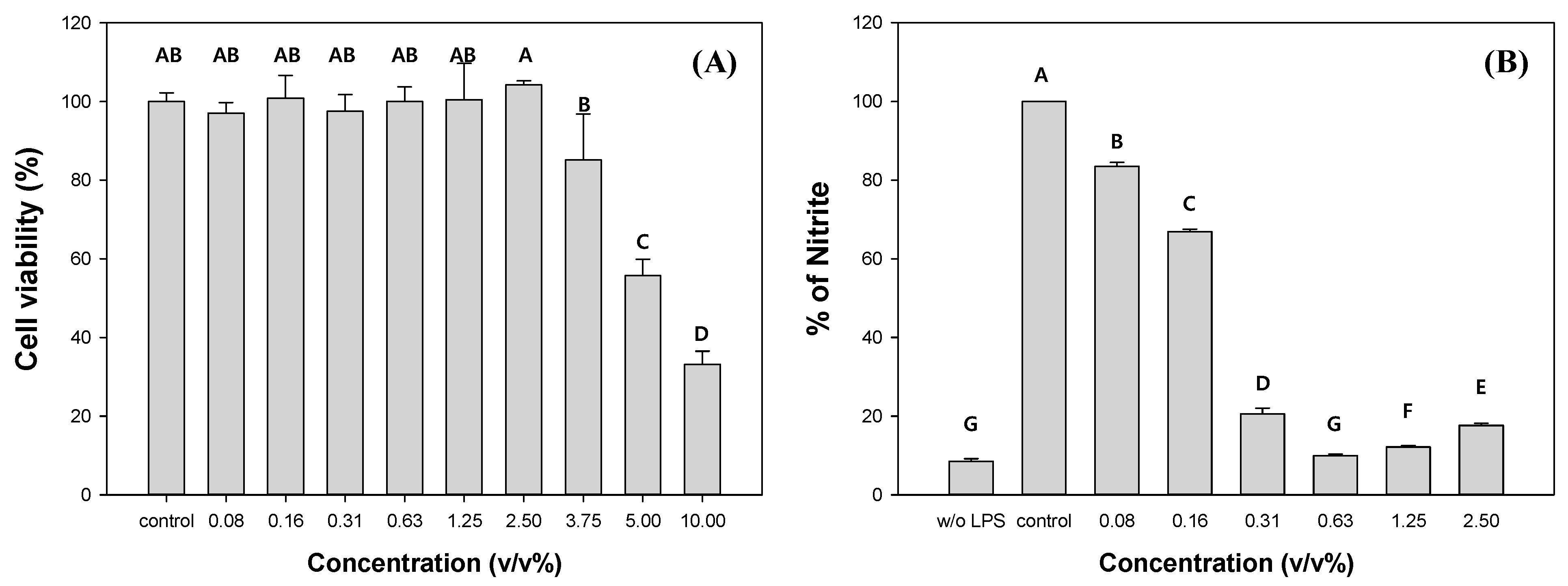
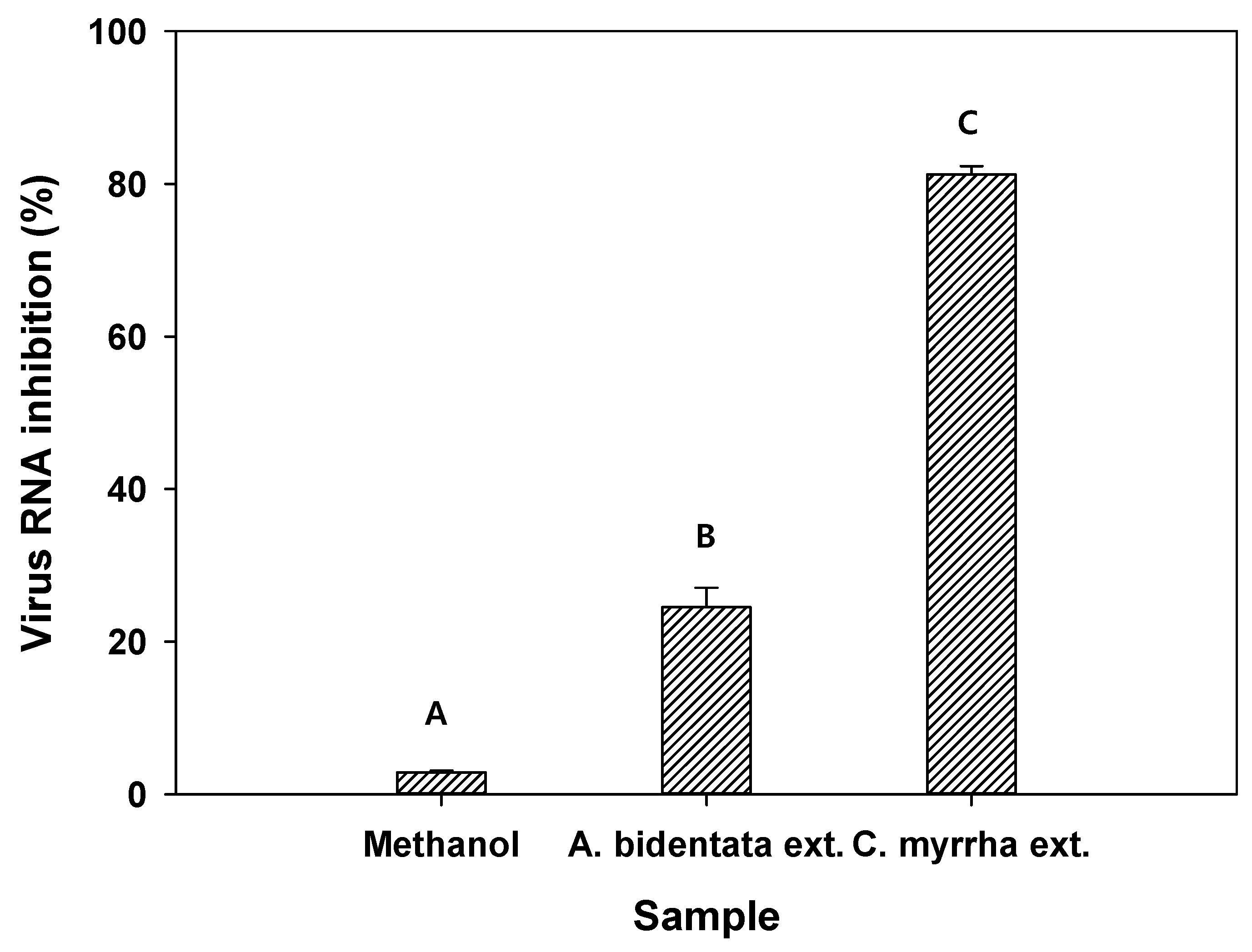
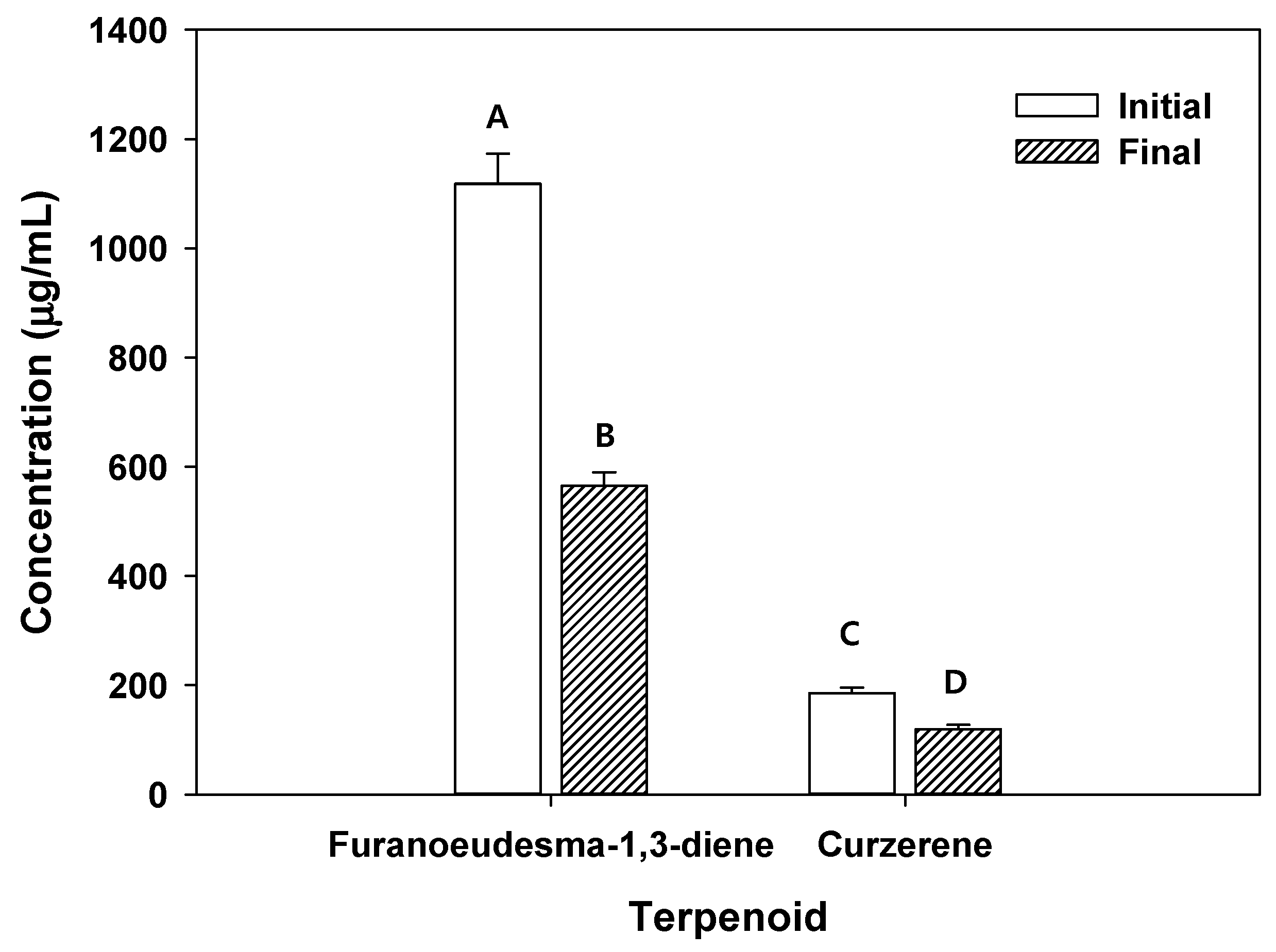
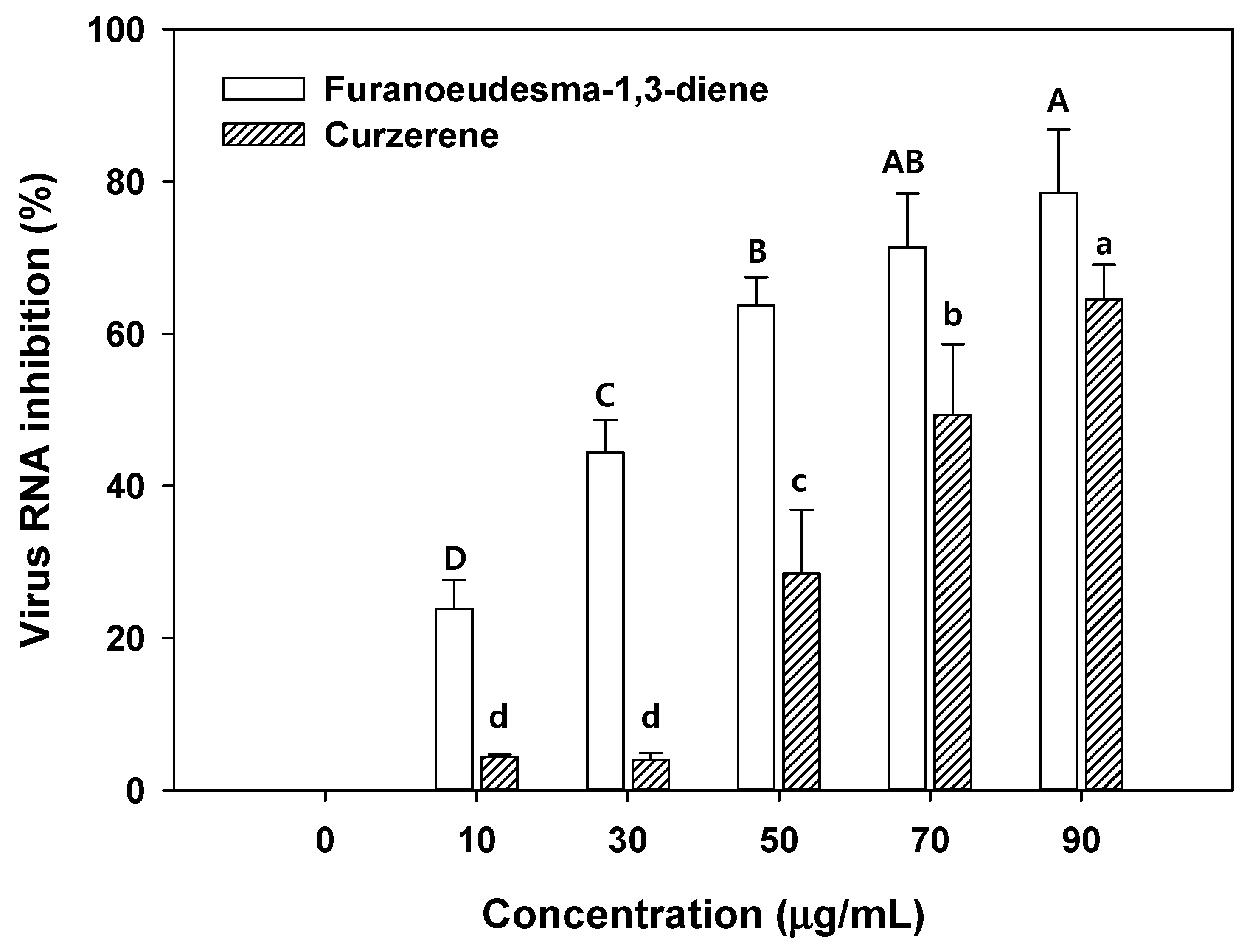
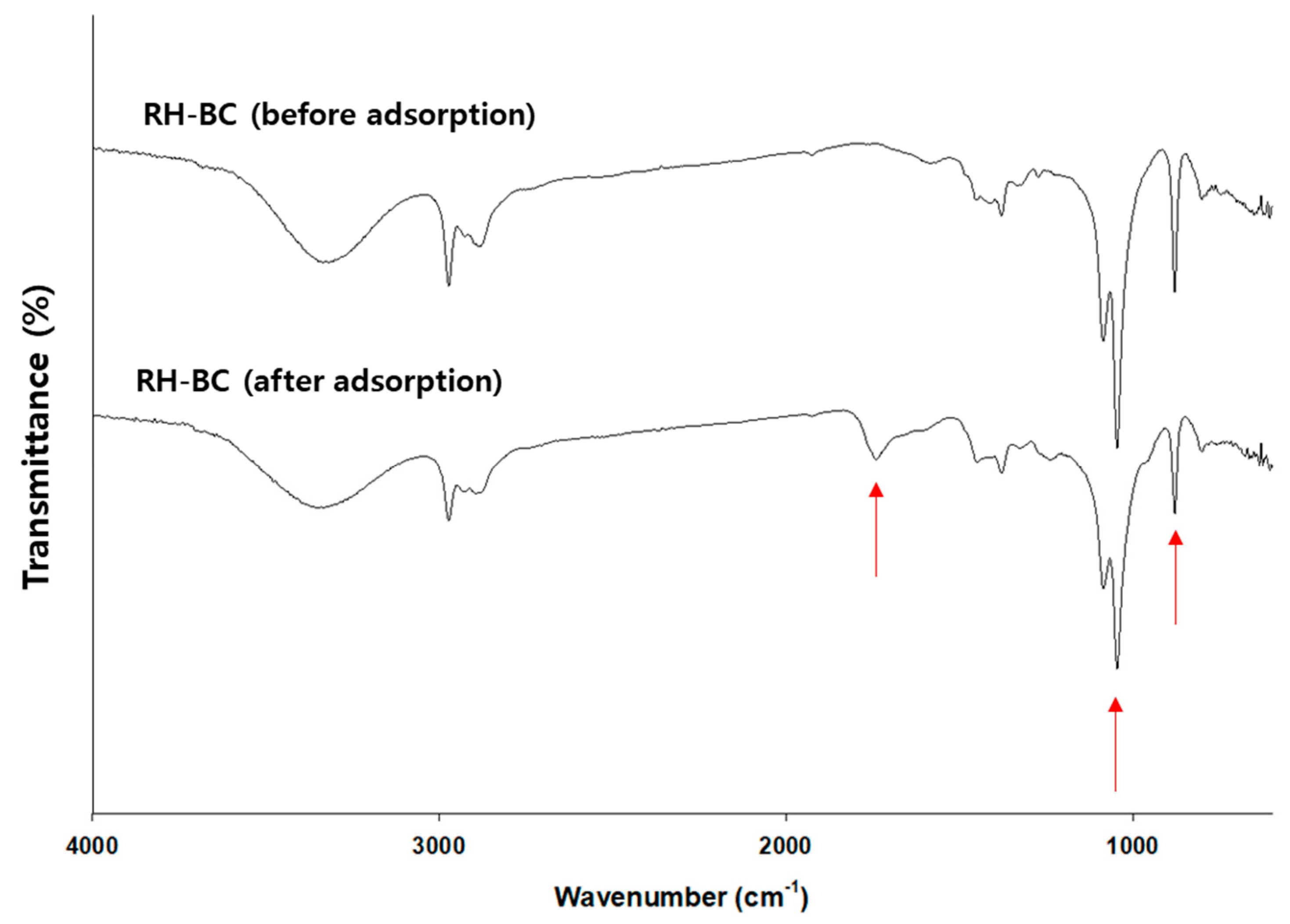
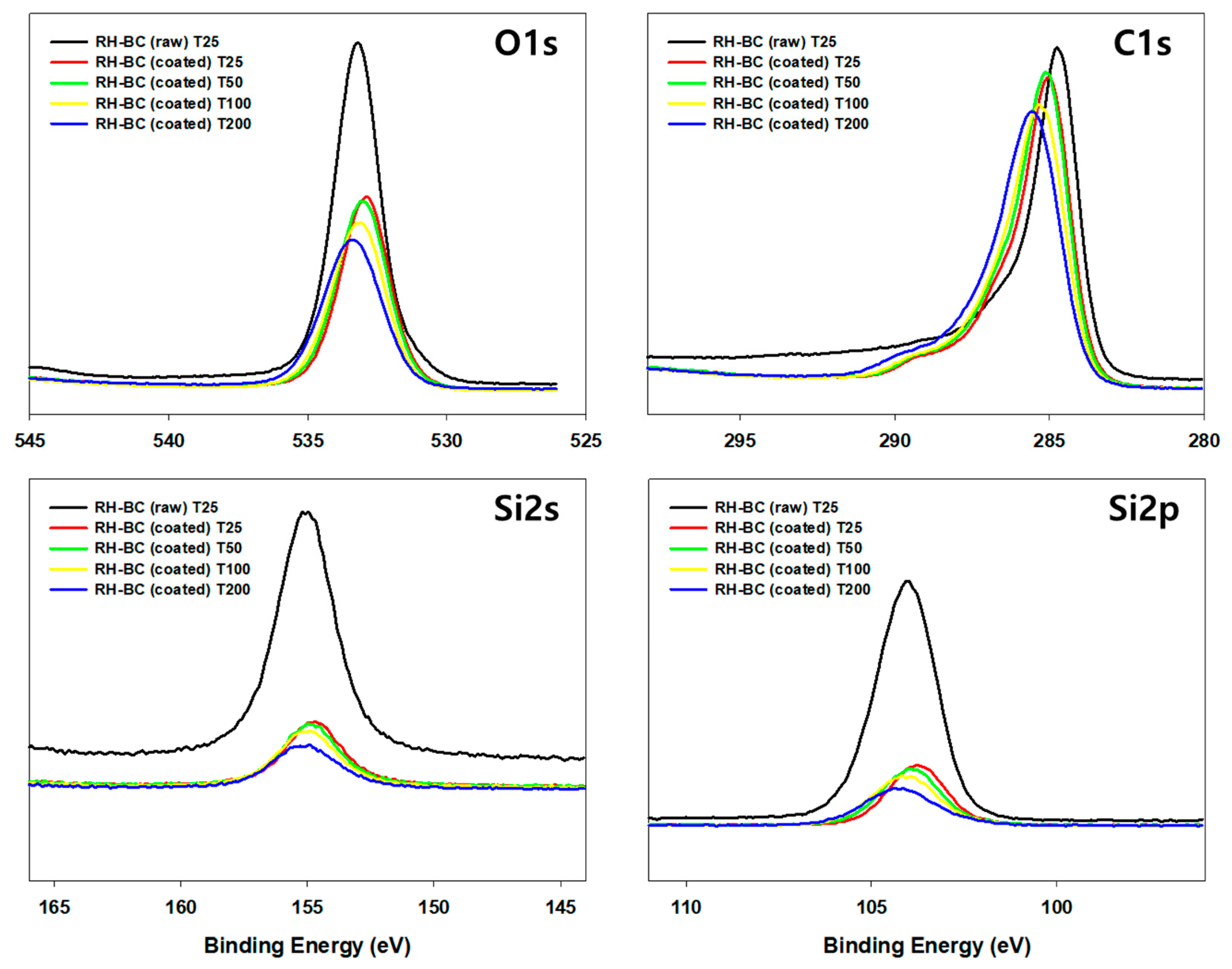
| Name of Strain | Homology (%) | Morphology | Gram Staining | Remark | Ref. |
|---|---|---|---|---|---|
| Paenibacillus pasadenensis NBRC 161214 | 98 | Rods | Positive | Soil, water, sewage, etc. | [47] |
| Micrococcus yunnanensis YIM 65004 | 99 | Cocci | Positive | Pollutants degradation | [49] |
| Pseudomonas azotoformans NBRC 12693 | 99 | Rods | Negative | Infection of cereal grains | [45] |
| Rhodococcus qingshengii dj1-6-2 | 99 | Ovoid | Positive | Carbendazim degradation | [44] |
| Staphylococcus capitis JCM 2420 | 99 | Cocci | Positive | Human skin | [46] |
| Staphylococcus epidermidis NBRC 100911 | 98 | Cocci | Positive | Human skin | [46] |
| Deinococcus radiodurans R1 | 99 | Cocci | Positive | Radiation resistance | [48] |
| No. | Name of Strain | Antibacterial Activity | ||||
|---|---|---|---|---|---|---|
| Hot Water | DMSO | Hexane | Ethanol | Methanol | ||
| 1 | Paenibacillus pasadenensis NBRC 161214 | - | - | - | + | + |
| 2 | Micrococcus yunnanensis YIM 65004 | - | + | - | + | + |
| 3 | Pseudomonas azotoformans NBRC 12693 | - | - | - | - | - |
| 4 | Rhodococcus qingshengii dj1-6-2 | - | - | - | - | + |
| 5 | Staphylococcus capitis JCM 2420 | - | - | - | - | - |
| 6 | Staphylococcus epidermidis NBRC 100911 | - | - | - | - | - |
| 7 | Deinococcus radiodurans R1 | - | - | - | + | + |
| No. | Name of Strain | Inhibition Zone Diameter (mm) |
|---|---|---|
| 1 | Paenibacillus pasadenensis NBRC 161214 | 14 ± 2.8 |
| 2 | Micrococcus yunnanensis YIM 65004 | 10 ± 0.0 |
| 3 | Pseudomonas azotoformans NBRC 12693 | ND |
| 4 | Rhodococcus qingshengii dj1-6-2 | 10 ± 1.4 |
| 5 | Staphylococcus capitis JCM 2420 | ND |
| 6 | Staphylococcus epidermidis NBRC 100911 | ND |
| 7 | Deinococcus radiodurans R1 | 12 ± 4.2 |
| Sample | Ct Value | Remaining Amount of Virus (%) |
|---|---|---|
| Water (without virus) | 0 | - |
| Virus (Initial) | 24.809 | 100.00 |
| WD-BC (Final) | 25.121 | 96.69 |
| Extract-coated WD-BC (Final) | 27.105 | 75.66 |
| RH-BC (Final) | 25.137 | 96.52 |
| Extract-coated RH-BC (Final) | 26.941 | 77.40 |
Disclaimer/Publisher’s Note: The statements, opinions and data contained in all publications are solely those of the individual author(s) and contributor(s) and not of MDPI and/or the editor(s). MDPI and/or the editor(s) disclaim responsibility for any injury to people or property resulting from any ideas, methods, instructions or products referred to in the content. |
© 2023 by the authors. Licensee MDPI, Basel, Switzerland. This article is an open access article distributed under the terms and conditions of the Creative Commons Attribution (CC BY) license (https://creativecommons.org/licenses/by/4.0/).
Share and Cite
Kim, J.W.; Park, S.; Sung, Y.W.; Song, H.J.; Yang, S.W.; Han, J.; Jo, J.W.; Lee, I.-S.; Lee, S.H.; Choi, Y.-K.; et al. Evaluation of Antibacterial and Antiviral Compounds from Commiphora myrrha (T.Nees) Engl. Resin and Their Promising Application with Biochar. Appl. Sci. 2023, 13, 10549. https://doi.org/10.3390/app131810549
Kim JW, Park S, Sung YW, Song HJ, Yang SW, Han J, Jo JW, Lee I-S, Lee SH, Choi Y-K, et al. Evaluation of Antibacterial and Antiviral Compounds from Commiphora myrrha (T.Nees) Engl. Resin and Their Promising Application with Biochar. Applied Sciences. 2023; 13(18):10549. https://doi.org/10.3390/app131810549
Chicago/Turabian StyleKim, Jin Woo, Saerom Park, Young Whan Sung, Hak Jin Song, Sung Woo Yang, Jiwoo Han, Jeong Wook Jo, Im-Soon Lee, Sang Hyun Lee, Yong-Keun Choi, and et al. 2023. "Evaluation of Antibacterial and Antiviral Compounds from Commiphora myrrha (T.Nees) Engl. Resin and Their Promising Application with Biochar" Applied Sciences 13, no. 18: 10549. https://doi.org/10.3390/app131810549
APA StyleKim, J. W., Park, S., Sung, Y. W., Song, H. J., Yang, S. W., Han, J., Jo, J. W., Lee, I.-S., Lee, S. H., Choi, Y.-K., & Kim, H. J. (2023). Evaluation of Antibacterial and Antiviral Compounds from Commiphora myrrha (T.Nees) Engl. Resin and Their Promising Application with Biochar. Applied Sciences, 13(18), 10549. https://doi.org/10.3390/app131810549







